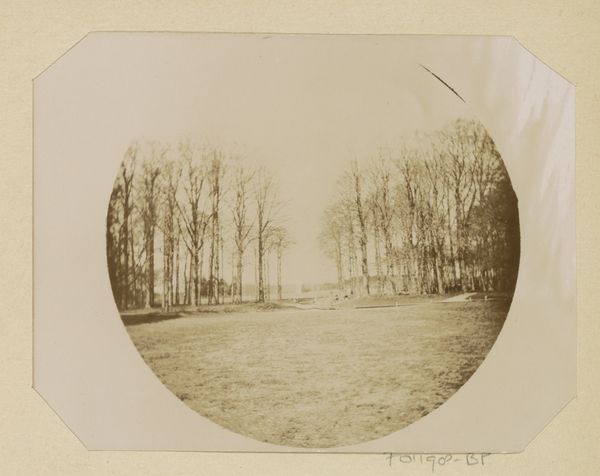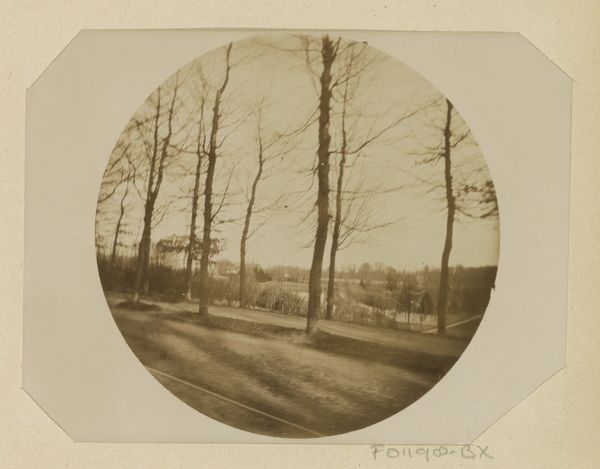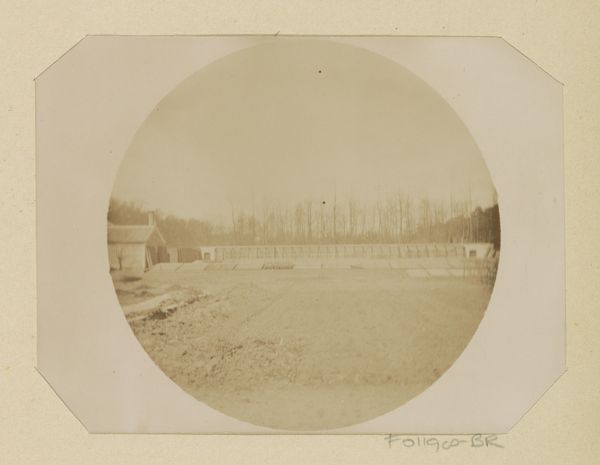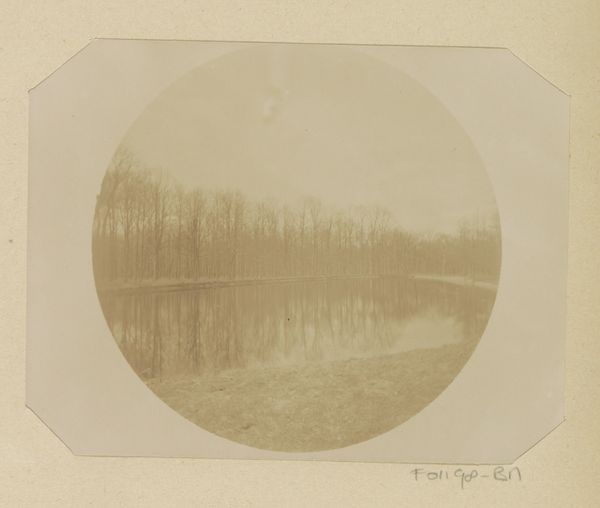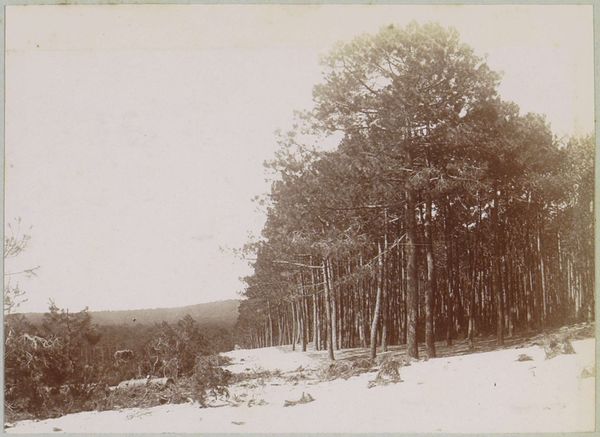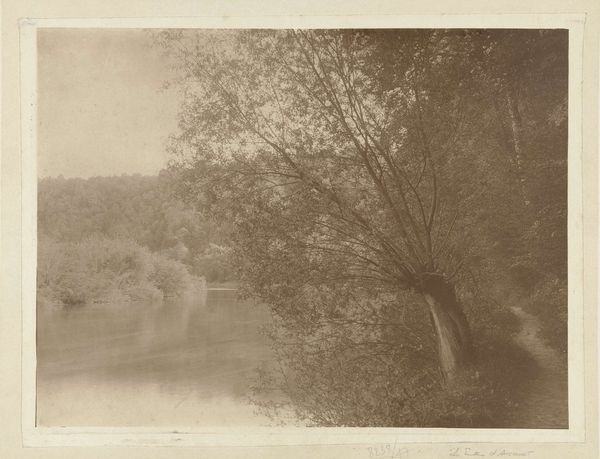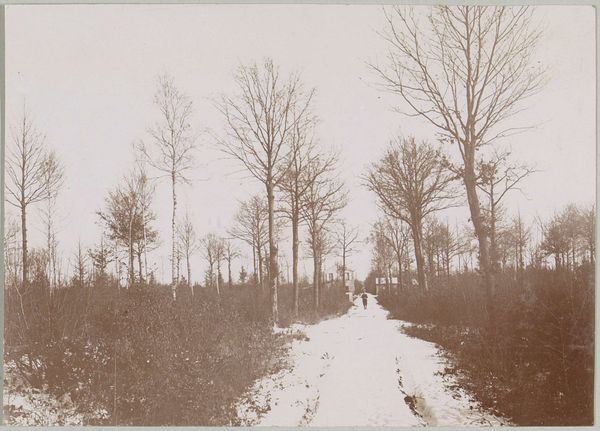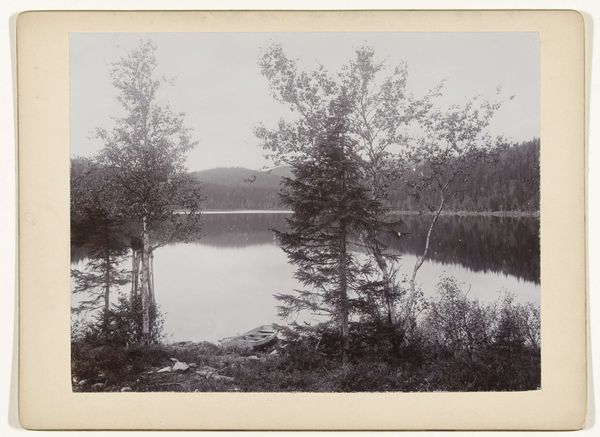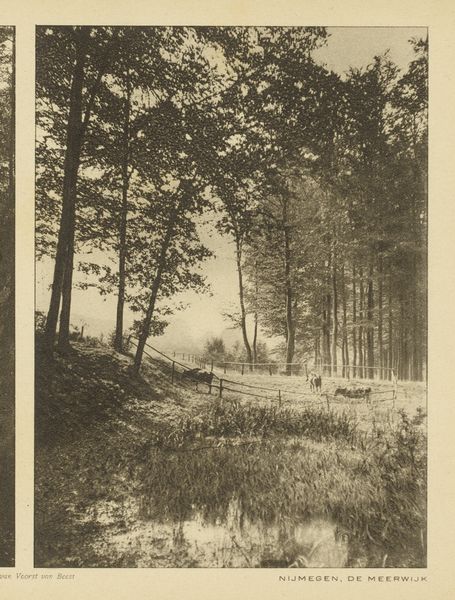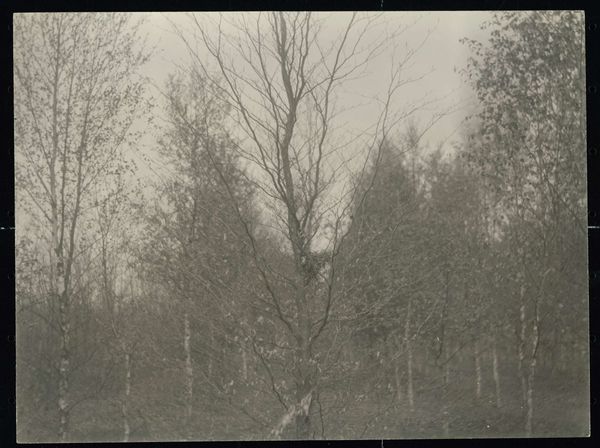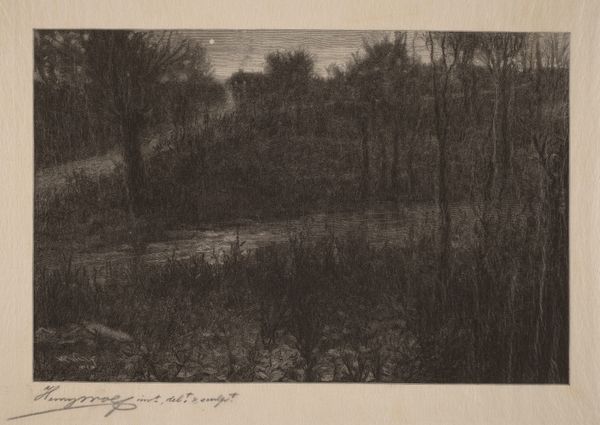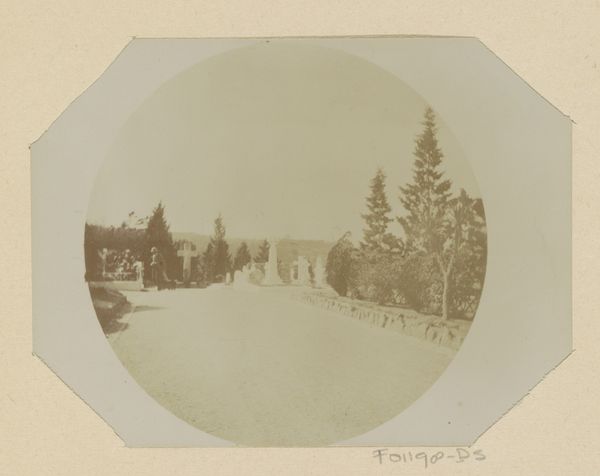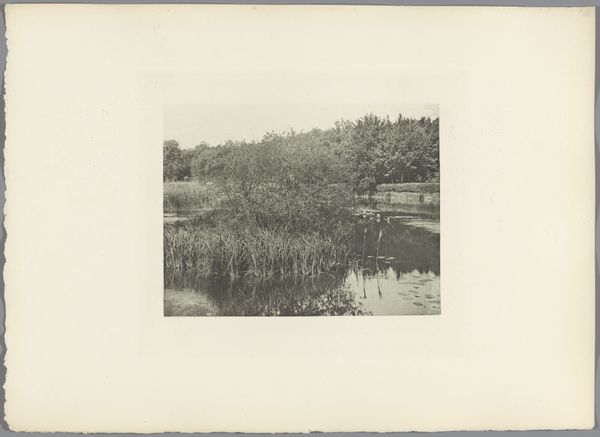
Dimensions: height 90 mm, width 120 mm
Copyright: Rijks Museum: Open Domain
Editor: Here we have Johanna Margaretha Piek’s "Landschap nabij Klein Warnsborn bij Arnhem," a gelatin silver print from around 1890. It’s a rather muted landscape; a pale field stretches towards bare trees in the distance. It's quite subtle. What strikes you about it? Curator: I'm immediately drawn to the gelatin-silver process itself. It's a mass-produced photographic material that democratized image-making in the late 19th century. What kind of social changes did this production facilitate? Piek wasn't just capturing a landscape; she was participating in a much broader shift in how people saw and recorded their world. Editor: That's interesting. I was focused on the artistic style, possibly Impressionistic because of the hazy quality, but your perspective on the technology and social impact is new to me. Curator: Consider also that landscape photography itself became increasingly accessible to a growing middle class seeking leisure and connection with nature. Piek’s choice of subject matter, the very act of capturing this scene with a relatively new technology speaks to a shifting relationship between the human and natural world and also emerging leisure culture driven by industrialization. Is she, perhaps, complicit with industrial forces through these technologies or is she more resisting? Editor: That's a really compelling question. It changes the way I see the artwork. Curator: Absolutely. The tools and the making always shift the art piece. Editor: This makes me want to delve into the industrialization happening around this period. Curator: Indeed. Now we're digging deeper!
Comments
No comments
Be the first to comment and join the conversation on the ultimate creative platform.
